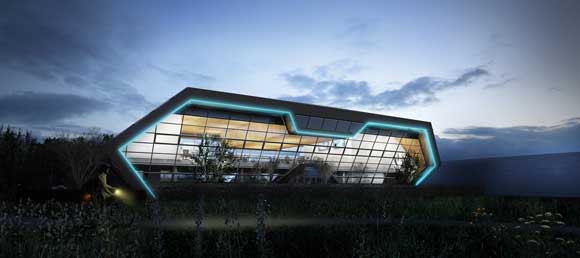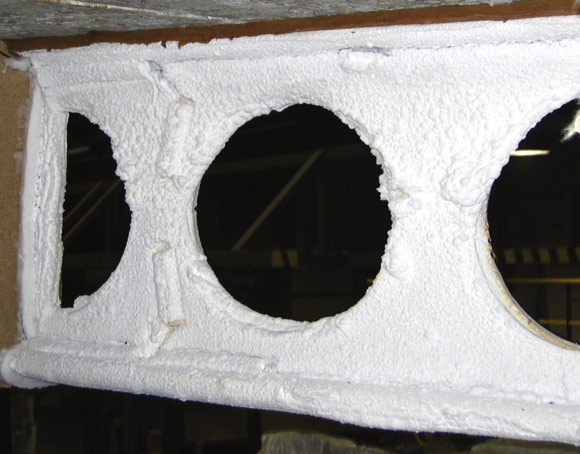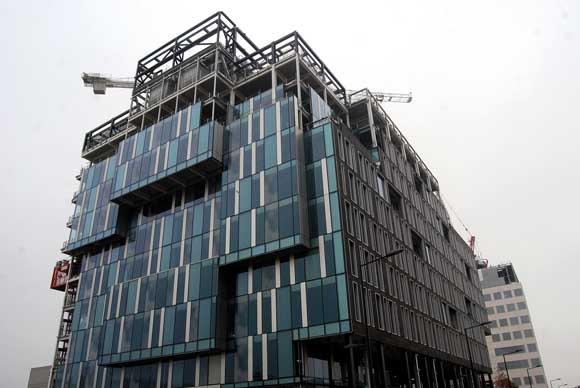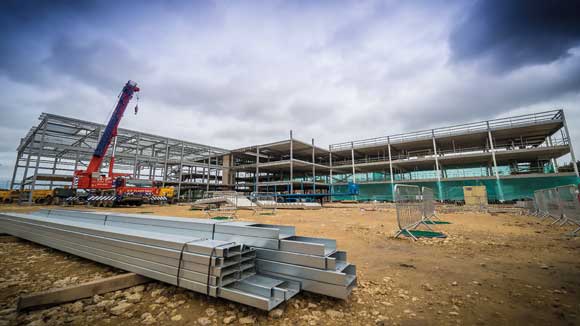Projects and Features
An introduction to cellular beams
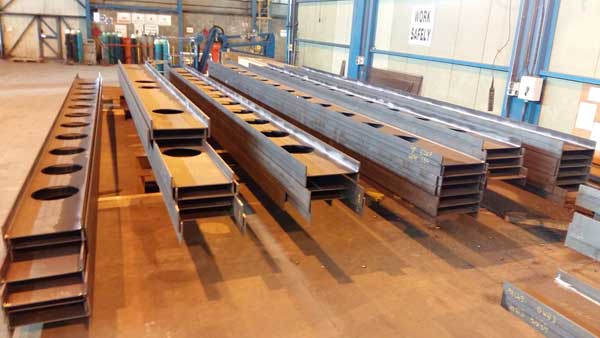 Beams with web openings, commonly known as ‘cellular beams’, are extremely popular and versatile structural steel components.
Beams with web openings, commonly known as ‘cellular beams’, are extremely popular and versatile structural steel components.
Cellular beams are often used to facilitate long spans resulting in flexible, column-free internal spaces, reduced substructure costs and shorter steel erection times. They can be made from rolled steel sections or fabricated from steel plate. In this article, NSC will provide an overview of these components; the types available, how they are produced, and the key benefits they provide in terms of service integration.
Rolled beams with web openings
Reserve capacity exists over much of the length of a rolled steel section such as a UB or UC and this permits rectangular or circular openings to be cut in the web, provided these openings are located away from the supports, to allow services to pass through the beam.
“The use of all types of cellular and fabricated beams has increased dramatically in recent decades as the number of suppliers with the capability, capacity and resources to competitively offer excellent options for such products has increased. This means it is now easy and cost-effective for steelwork contractors to offer this popular solution on their projects.” Jamestown’s Managing Director Fiacre Creegan.Relatively large openings can usually be provided without the need for strengthening with horizontal stiffeners, provided that there is adequate shear resistance in the remaining web. Circular openings are more efficient structurally than rectangular openings. If larger service zones are necessary, more costly ‘stiffened’ rectangular openings are required. Opening sizes and positions can be tailored to meet the specific requirements of a particular service distribution strategy.
Cellular beams fabricated from rolled steel sections
Cellular beams can be fabricated from rolled UB or UC steel sections. They are produced by cutting rolled steel sections longitudinally and re-welding them to create deeper beams with a series of circular holes. The sections are structurally efficient and relatively large openings can be created through which services can be passed. The production process allows the sections to be pre-cambered during production.
Cellular beams are more suitable for use as long span secondary beams than for primary beams, as the shear capacity of the web is considerably weakened by the openings. However, they can be designed for use as primary members by strengthening the openings where shear forces are very high, either by infilling the openings or by using horizontal stiffeners.
For cellular beams of this type, the opening diameter is typically 0.6 to 0.8 times the final beam depth and the centre-centre spacing is typically 1.5 times the opening diameter. Where shear forces are low, the openings may be elongated by removing the ‘web post’ separating two adjacent openings. For composite beam design, the top Tee or flange may be significantly reduced in size relative to the bottom Tee or flange to maximise structural efficiency.
Cellular beams fabricated from steel plate
Cellular beams are also commonly fabricated from plate. In these plate girder type sections the flange and web sizes, thicknesses and overall depth can be selected to be the most efficient for the applied loading, form of construction and opening requirements. The fabrication process using automated equipment suits the production of both cellular beams/ plate girders with a series of regular openings, and beams with bespoke openings in terms of size, shape and position.
Fabricated beams/ plate girders provide an efficient solution for both long span secondary cellular beams and more heavily loaded primary beams, as the web thickness can be increased relatively easily. Again, for composite construction the top flange may be significantly reduced in size relative to the bottom flange to maximise structural efficiency. The web plate can be profile-cut with a pre-determined camber prior to welding to suit any eventual pre-camber requirements.
The ability to shape the web plate prior to welding the three components into a beam configuration also means that beams with holes need not be of a constant depth, opening up all sorts of architectural possibilities with haunched or tapered girders.
Cellular beams, be they fabricated from either rolled sections or plate, are used where a high degree of flexibility in service routing is required and this form of construction has become the most common way of designing for long spans of 13 to 18m typically. The most appropriate solution to adopt can often depend on the size, shape and regularity of the openings required.
The benefit of service integration
Distributing services within the structural zone through the use of beams with web openings leads to economies in the construction by reducing the floor-to-floor height, which has a double benefit of reducing the external cladding required and also reducing heat loss through the envelope. In multi-storey buildings, service integration can allow extra floors to be provided within the same overall building height and careful layout of the structural elements can lead to flexibility in service distribution and ease of future maintenance.
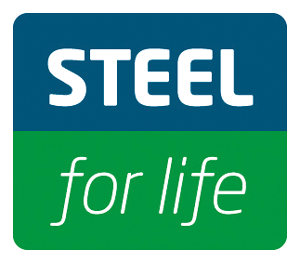 Sponsors
Sponsors
Structural components
Headline: Jamestown Manufacturing Ltd
Bronze: Kloeckner Metals UK









